Best LaTeX Equation Guides to Buy in December 2025
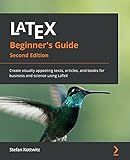
LaTeX Beginner's Guide: Create visually appealing texts, articles, and books for business and science using LaTeX



LaTeX: A Document Preparation System


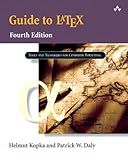
Guide to Latex


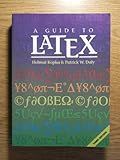
A Guide to LATEX: Document Preparation for Beginners and Advanced Users (3rd Edition)



LaTeX Beginner's Guide


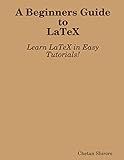
A Beginners Guide to Latex


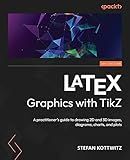
LaTeX Graphics with TikZ: A practitioner's guide to drawing 2D and 3D images, diagrams, charts, and plots


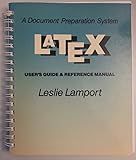
The Latex Document Preparation System: User's Guide & Reference Manual



Cheatsheet for LaTeX: A quick reference guide for LaTeX commands


In LaTeX, equations and subsections are typically numbered automatically by the document class and the use of specific environments or commands. To identify the counters used for equations, you can look at the equation environment or other math environments like align or gather, which generate equation numbers. These counters are usually labeled sequentially as Equation 1, Equation 2, etc., unless otherwise specified. For subsections, counters are influenced by the document class and its hierarchical structure such as sections, subsections, subsubsections, and more. By default, subsection counters follow the numbering format specified by the document class, generally with numbers indicating their position within each section (e.g., 1.1 for the first subsection of section 1). If you wish to customize or reset these counters, LaTeX allows you to do so by manipulating the relevant counters using commands like \setcounter or \addtocounter to manually adjust the numbering as needed. These methods let you control how equations and subsections are numbered, which can be especially useful for structuring large documents or when adhering to specific formatting guidelines.
How to reset equation numbers within subsections in LaTeX?
To reset equation numbers within subsections in LaTeX, you'll want to modify the equation numbering scheme so that the numbers reflect the sub-sectioning structure. This can be achieved using the amsmath package, which provides a convenient way to control equation numbering. Here's how you can do it:
- Load the Required Packages: Make sure you include the amsmath package in your preamble. You can also use the chngcntr package to conveniently reset counters. \usepackage{amsmath} \usepackage{chngcntr}
- Define the Equation Numbering Format: You need to redefine the equation numbering to include subsection numbers. Add the following commands to your preamble: \numberwithin{equation}{subsection} This command makes the equation numbers include the subsection number, so they will look like (2.1.1), where 2 is the section, 1 is the subsection, and the last 1 is the equation number within that subsection.
- Reset the Counter at Each Subsection: To ensure that the equation numbering resets within each subsection, you don't need additional commands since numberwithin handles the resetting automatically.
Here’s how you might set up a simple document:
\documentclass{article}
\usepackage{amsmath} \usepackage{chngcntr}
\numberwithin{equation}{subsection}
\begin{document}
\section{First Section}
\subsection{First Subsection} \begin{equation} E = mc^2 \end{equation}
\begin{equation} a^2 + b^2 = c^2 \end{equation}
\subsection{Second Subsection} \begin{equation} F = ma \end{equation}
\end{document}
In this example, the equations in the "First Subsection" will be numbered (1.1.1), (1.1.2), and in the "Second Subsection," they will start over at (1.2.1), (1.2.2), etc. Each subsection's equation counter restarts at 1 because of the numberwithin command.
How to use package-specific counters in LaTeX?
In LaTeX, using package-specific counters is often necessary when you are employing packages like hyperref, amsmath, or algorithmic, which define their own counters for specific applications. Here's a general guide on how to interact with these counters:
- Identifying the Counter: First, you need to identify the counter that the package defines or uses. This usually can be found in the package documentation or by looking through the package code if you're comfortable with LaTeX package internals.
- Using the Counter: Once you know the counter's name, you can manipulate it using standard LaTeX counter commands. Here are some common commands for counter manipulation: \arabic{countername}: This command returns the value of the counter in Arabic numerals. \alph{countername}: This command returns the value of the counter as a lowercase alphabetic character. \Alph{countername}: This command returns the value of the counter as an uppercase alphabetic character. \roman{countername}: This command returns the value of the counter in lowercase Roman numerals. \Roman{countername}: This command returns the value of the counter in uppercase Roman numerals. \setcounter{countername}{value}: This command sets the counter to a specified integer value. \addtocounter{countername}{value}: This command adds a specified integer value to the counter. \refstepcounter{countername}: Similar to \stepcounter, but it allows the counter to be referenced.
- Example: Suppose you are using the algorithmic package and you know it has a counter called algorithm for labeling algorithms: \documentclass{article} \usepackage{algorithm} \usepackage{algorithmic} \begin{document} \begin{algorithm} \caption{Example Algorithm} \begin{algorithmic} \STATE Initialize counter \end{algorithmic} \end{algorithm} % Using the algorithm counter The current value of the `algorithm` counter is \arabic{algorithm}. \end{document}
- Tips: Always consult the package documentation for how counters are managed and named within that package. Keep in mind that some packages might redefine how counters are displayed or might provide their own commands that automatically manipulate these counters. Be cautious when manipulating package-specific counters as these might affect cross-references and labels within your document.
Using package-specific counters effectively requires a good understanding of both the LaTeX counter system and the specific package's counter definitions. Always remember to test your document to ensure that your counter manipulations do not interfere with other package functions.
How to customize subsection counters in LaTeX?
Customizing subsection counters in LaTeX can be done using the \renewcommand command to redefine how the counters are displayed. This process generally involves changing the way the subsection (and potentially section) numbers are formatted.
Here's a basic guide on how to customize subsection counters:
- Basic Customization: First, include the necessary lines in the preamble of your LaTeX document: \documentclass{article} % or any other class
- Changing Subsection Numbering Style: To change the numbering style of subsections, you can redefine the \thesubsection command. For example, to change the numbering to use Roman numerals for sections and subsections, use: \renewcommand\thesection{\Roman{section}} \renewcommand\thesubsection{\thesection.\roman{subsection}} This sets sections to use uppercase Roman numerals and subsections to use lowercase Roman numerals, with subsections appearing as "I.i", "I.ii", etc.
- Custom Prefix or Suffix: If you want to add a prefix or suffix to the subsection number, modify the definition accordingly. For example, to add “Sub-” before the number: \renewcommand\thesubsection{Sub-\thesection.\arabic{subsection}}
- Formatting: If you need more complex formatting, such as bold numbers, you can add formatting commands directly: \renewcommand\thesubsection{\textbf{\thesection.\arabic{subsection}}}
- Independent Subsection Numbering: To number subsections independently of sections: \renewcommand\thesubsection{\arabic{subsection}} \setcounter{section}{0} % Reset section counter for this to work correctly
- No Numbering: To have unnumbered subsections: \setcounter{subsection}{0} % Reset subsection numbering
- Applying Changes: Remember to place these \renewcommand directives in your document's preamble, after loading any packages that might affect sectioning commands.
Here is a small example of how it might look in a complete document:
\documentclass{article}
% Customize subsection counters \renewcommand\thesection{\Roman{section}} \renewcommand\thesubsection{\thesection.\roman{subsection}}
\begin{document}
\section{Introduction} \subsection{Background} \subsection{Scope}
\section{Methods} \subsection{Data Collection} \subsection{Analysis}
\end{document}
This will create sections numbered as I, II, etc., with subsections numbered as I.i, I.ii, etc. Adjust these examples to fit your specific requirements.
How to view the current subsection counter value in LaTeX?
In LaTeX, if you want to view the current value of the subsection counter, you can use the \thesubsection command. This command will output the formatted representation of the current subsection counter, based on your document class and sectioning style.
For instance, if you're writing a document and you've reached subsection 3 under section 2, the command \thesubsection will likely output "2.3" (or a similar format, depending on your document class and numbering style).
Here's a small example demonstrating how you might use this in a document:
\documentclass{article}
\begin{document}
\section{Introduction}
\subsection{Background}
The current subsection number is: \thesubsection
\subsection{Objectives}
The current subsection number now is: \thesubsection
\end{document}
In this example, the output for the line “The current subsection number is: \thesubsection” would be "The current subsection number is: 1.1", and similarly updated for subsequent sections and subsections.
If you want to use only the numeric value of the counter without any formatting, you can directly access the subsection counter using the \arabic command:
\arabic{subsection}
This would give you just the numeric part, according to the count, without section-level prefixes such as "1." in "1.1". For advanced customizations or accessing raw counter values, this approach might be more appropriate.
